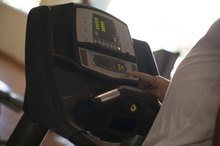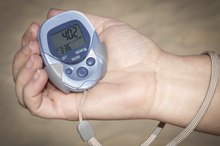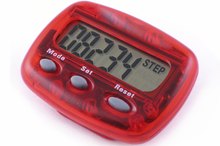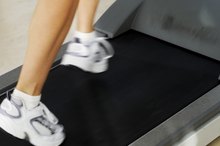How to Run Using Jeff Galloway's Run/Walk/Run Training Method
Fewer than 1 percent of Americans can claim to have completed a marathon. The training for a marathon can be quite extensive because it can take months to properly prepare for 26.2 miles of running. However, Jeff Galloway is an experienced marathon runner who teaches marathon wannabes how to run a marathon injury-free using his Run/Walk/Run training program.
Set up your running schedule. You will want to run two times a week for about 30 minutes and schedule one day (typically a weekend) for a longer run, going for distance rather than time. Work your long runs up to the distance that you need to run for your final race, and schedule about six months of preparation time for a marathon, four months for a half-marathon and two for a 10K.
How Much Weight Can I Lose If I Run 4 Miles 5 Days a Week?
Learn More
Determine your goal time for completing your chosen race. Consider the distance of your "final race" (10K, half-marathon or marathon) and divide the time by the number of miles to determine your goal race pace. For example, if you are running six miles, and want to do so in an hour or less, then you will want to run a goal pace of a 10-minute mile.
Determine the Run/Walk/Run ratio that will work for you by using the chart below:
Min/Mile Run/Walk Ratio 8 min/mile 4 minutes/35 seconds 9 min/mile 4 minutes/1 minute 10 min/mile 3 minutes/1 minute 11 min/mile 2.5 minutes/1 minute 12 min/mile 2 minutes/1 minute 13 min/mile 1 minute/1 minute 14 min/mile 30 seconds/30 seconds 15 min/mile 30 seconds/45 seconds 16 min/mile 30 seconds/60 seconds
How Long Should I Run a Day if I Need to Lose 10 Pounds?
Learn More
Utilize the Run/Walk/Run schedule referenced by the above chart. To meet your approximate race time, you will want to run for the suggested time, and then walk for the suggested time. Use a stop watch during your runs to time the segments.
Related Articles
References
Writer Bio
Sara Haley has been writing professionally since 1998, writing articles for companies such as "Planned Parenthood." During her senior year in high school, she wrote for "The Papillion Times," "The Gretna Breeze," and other local newspapers. She also writes for her own sites, Omaha Moms and Happy Apping, andstudied in English and journalism at Metropolitan Community College.









